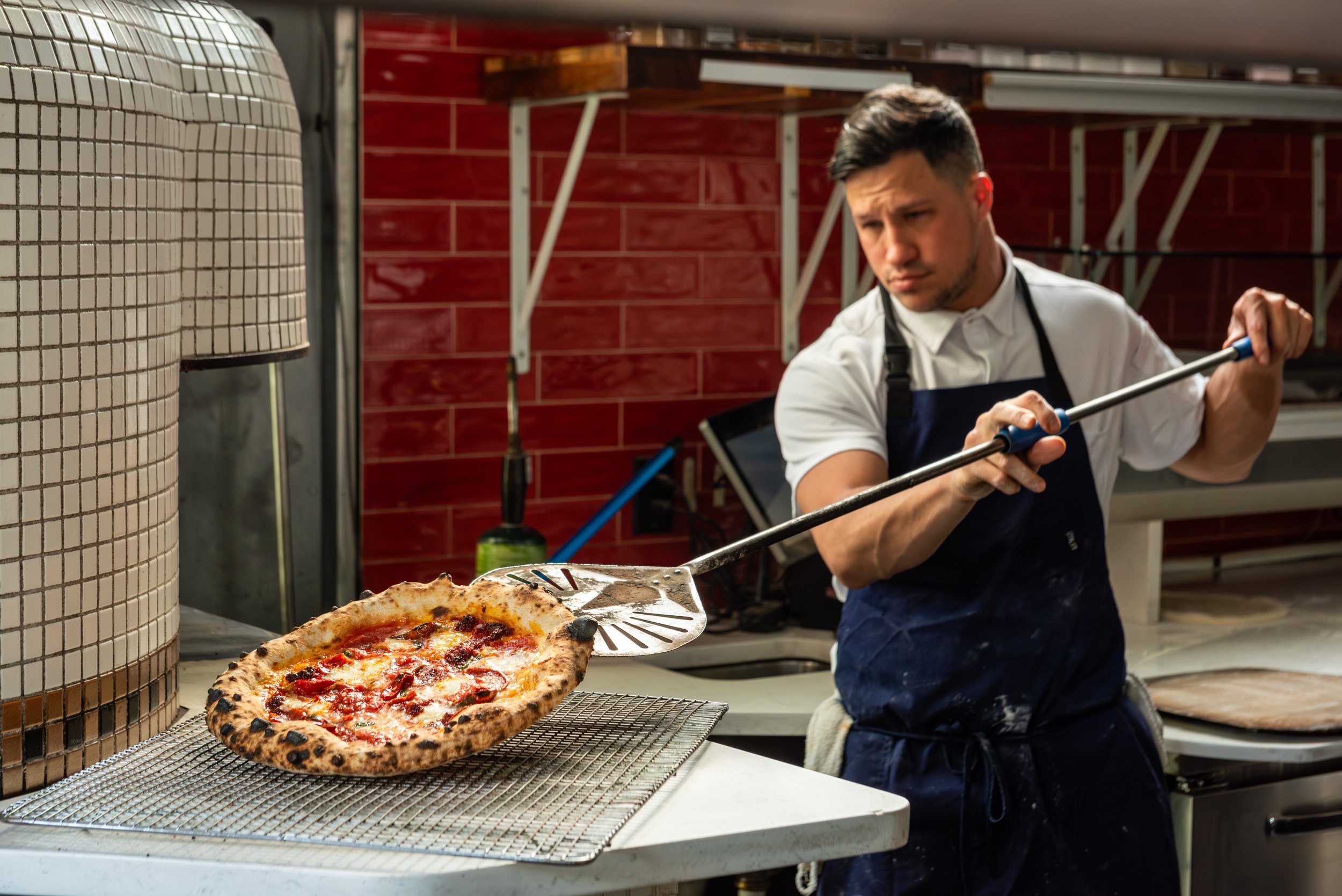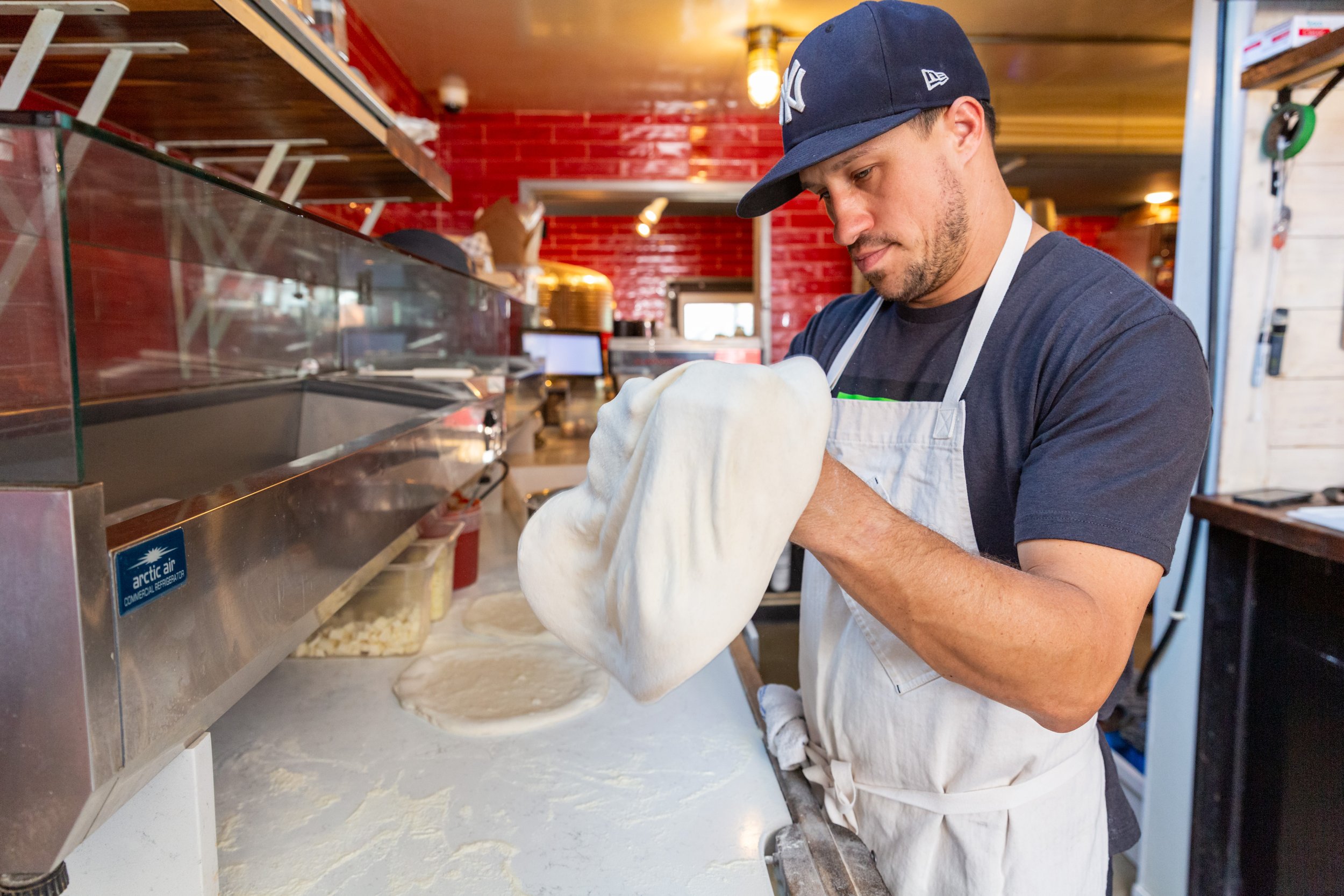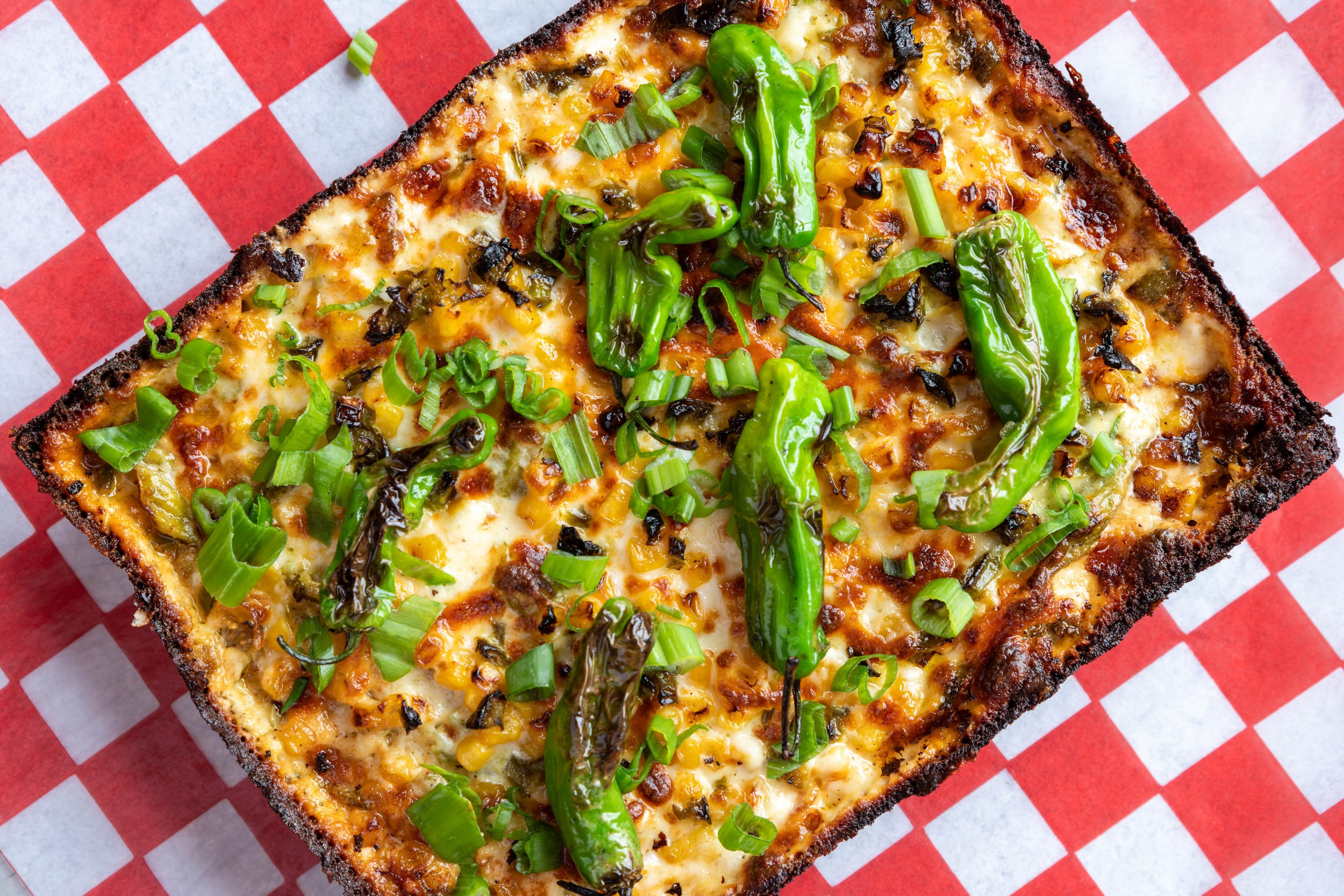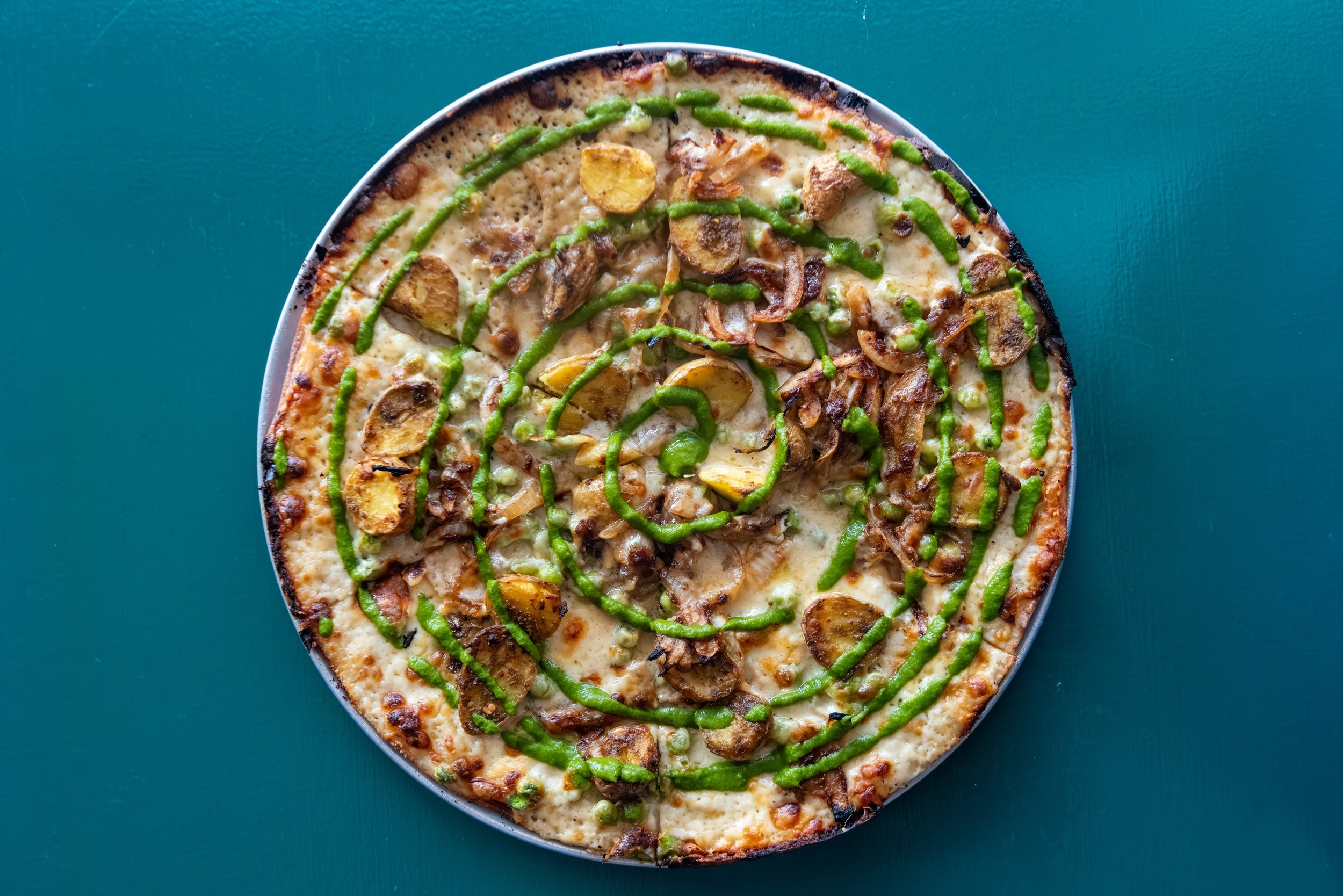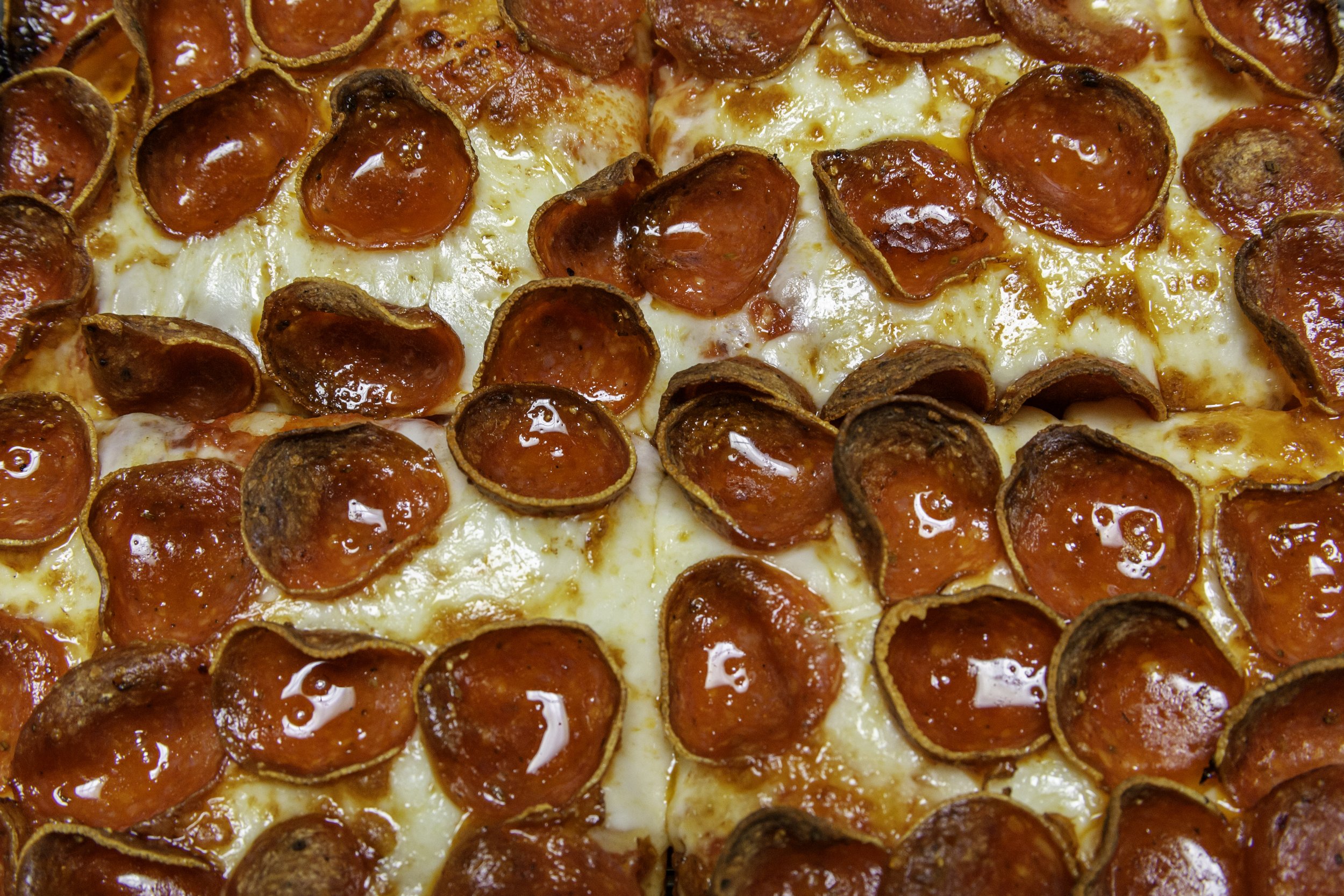How to Make a Pizza Margherita
High-Brix tomatoes, freshly milled starter flour, Missy Elliott, and haiku—these are just a few of the essentials in Pizzaiola Patrick Kerzetski’s Italian classic.
Develop a starter culture.
Here at Pizzeria Locale, we’re firm believers that excellent pizza dough comes from a happy, lively yeast culture. Keep in mind that wild yeasts vary from region to region, so the timing may need to be adjusted depending on local wild yeast culture. This recipe uses the wild yeast cultures of Boulder, Colorado. We feed our starter with a 50/50 blend of freshly milled red fife wheat berries, and Blé Marquis bolted bread flour, both from Anson Mills. Beyond the yeast culture, timing in our pizzas is everything. Really, never rushing the dough is key.
Capture a yeast culture.
Start by milling 300 grams red fife wheat berries on the finest setting. We use a KoMo Fidibus Classic 21 grain mill for our small milling needs. Mix with 300 grams Blé Marquis bolted bread flour, and 700 grams cool water. Place in a 4-quart cambro and cover with cheesecloth. Put this container in a warm, room temperature area (outside works best if it’s 60℉ or warmer) until you start to see bubbly yeast activity. This can take anywhere between 3 and 10 days.
We also outfitted our yeast capturing vessel with a haiku about yeast from Henry David Thoreau’s Walden to harness good energy. This step is optional, but recommended. A song or love note will also suffice.
Once the bubbly yeast activity is achieved, it is time to put the starter culture on a regular feeding schedule. In a fresh container, scale out 100 grams of the starter culture. To that add 200 grams starter flour (equal parts freshly milled red fife wheat berries and Blé Marquis bolted bread flour). Mix until combined. Repeat this process once a day until the starter is rising and falling consistently.
Prepare the starter for dough making.
Twenty-four hours before mixing the dough, scale 50 grams of starter culture in a new container and feed with 100 grams cool water and 100 grams starter flour; mix till combined. After 6 hours, add an additional 100 grams starter flour and 100 grams cool water; mix until combined. Twelve hours later, add 200 grams starter flour and 200 grams cool water; mix until combined. The starter is ready to use about 6 hours after the final feed and is in its most ideal state as soon as it reaches maximum volume. To test the starter for readiness, scoop a little out and drop it in a bowl of water. The starter should float on top without breaking up.
Make the dough.
Here at Pizzeria Locale, we use Molino Pasini Marrone 00 flour. Thus far, this is the only flour we have found that can stand up to our extensive fermentation time without breaking down. If using a different 00 flour in this recipe, it would be wise to substitute 25 percent of the total flour weight with a strong bread flour. The baker’s percentages for the dough are as follows:
Filtered water 58%
Starter .055%
00 flour 100%
Sea salt 3.17%
Total Percentage 161.255
Conversion Factor 1.61225
In the bowl of a 55-quart spiral mixer, combine water, starter, and flour. Mix in reverse until combined, 20 to 30 seconds. Switch mixer to forward direction and mix 5 minutes on slowest setting. Allow the dough to autolyse for 45 minutes. After the autolyse, add the salt and mix for an additional 9 minutes. The goal is to have the dough come out of the mixer at 60℉. We are currently using 44℉ water to achieve this, though it varies seasonally. After mixing, place the dough in a lexan and allow to ferment for 24 hours at 55℉. After 24 hours, the dough should have grown about one-third of its volume and risen to 65℉.
Divide dough into 255-gram pieces by hand using the staglio a mano method, as you would to make mozzarella. After balling the dough, return to 55℉ and allow to ferment for another full 24 hours. After the secondary fermentation, the dough is ready for pizza making, though it can be retarded at 38℉ for up to 24 hours.
Make the pizza
While listening to Missy Elliot, or other lively music, carefully remove a ball of dough (panetti in Italian), taking care to degass the ball as little as possible. Place the ball in a deep pile of flour. Then, with the pads of your first and middle and ring fingers, press the dough into a circle, leaving a solid inch undisturbed around the outside for the crust. It’s very important not to degass the crust. Gently extend the dough in a circular motion, being as delicate as you are capable of. Once the dough is 11 inches in diameter, top with 46 grams tomato sauce, 60 grams mozzarella, 25 grams Parmigiano Reggiano, 10 grams basil, and a generous drizzle of extra virgin olive oil. Bake at 1,000℉ for no more than 60 seconds. The crust should have heavy coloration.
Serve the pizza.
We serve our pizzas uncut since they’re still cooking as they come out of the oven. If you slice them too soon, they will bleed liquid and compromise the integrity of our crust. A margherita eats best 90 seconds after coming out of the oven.
Notes on toppings.
Tomato Sauce: We use exceptionally acidic, high-Brix Antico Casale Franzese from Campania. We mill the tomatoes and add 38 grams sea salt per 3 kilograms tomato. This sauce does not see heat prior to the oven.
Mozzarella: We use a 50/50 bland of grande fiore di latte and ambrosi mozzarella di bufala. The cow’s milk mozzarella adds richness to the buffalo’s tang. Place cheese in 5 or 6 clumps rather than scattered evenly across the top. This way, the cheese remains cheese and the sauce remains sauce.
Basil: The more fragrant the basil, the better. If you slap it between your hands before putting it on the pizza, it makes that fragrance pop a bit more. Basil should be placed under the Parmigiano so the Parmigiano can crisp up on the basil leaves.
Parmigiano Reggiano
We use a 24-month aged Parmigiano Reggiano and apply the cheese to the very edge of the pizza.
Olive Oil: We use a spicy, organic Asaro Brothers first cold-pressed extra virgin olive oil from Sicily. Oil should be applied in a ring right where the sauce meets the crust. This way the oil spatters and spits in the oven, creating more aggressive coloration on the crust.




